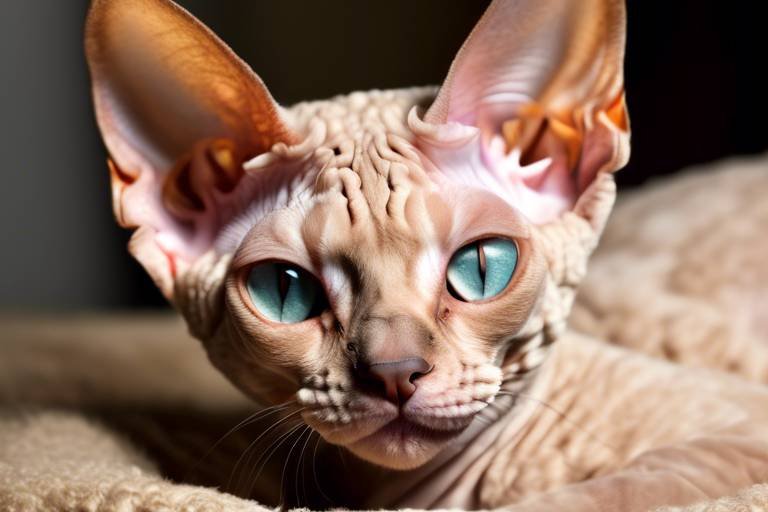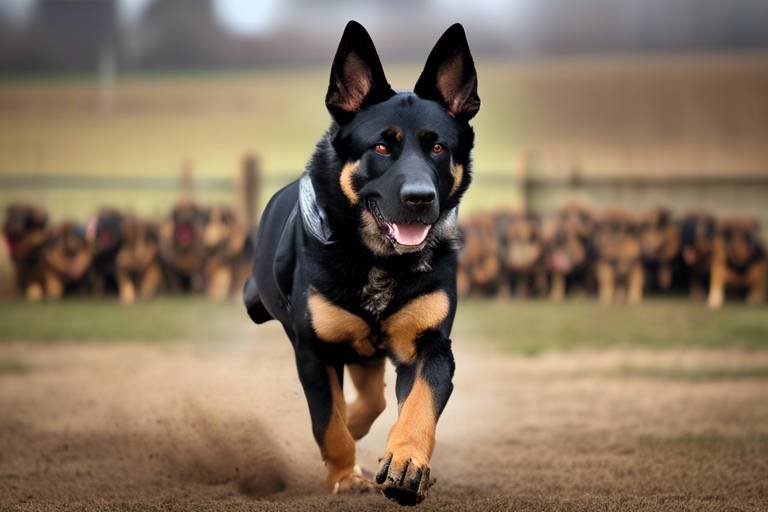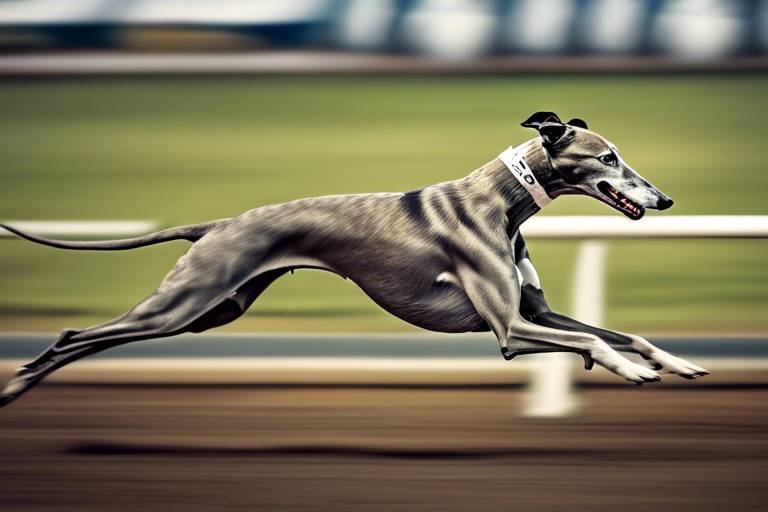Understanding the Traits of the Lapphund
The Lapphund, a breed steeped in history and rich in unique characteristics, has captivated the hearts of dog lovers around the world. Originating from the northern regions, these dogs were initially bred by the Sámi people for herding reindeer, showcasing their incredible adaptability and intelligence. Today, they are cherished not only for their working abilities but also for their loving temperament and striking appearance. If you're considering adding a Lapphund to your family, understanding their traits is essential for ensuring a harmonious and fulfilling relationship.
One of the most remarkable aspects of the Lapphund is their friendly and affectionate nature. They are known to form strong bonds with their families, often displaying a loyalty that is hard to match. This breed thrives on companionship and is happiest when they are included in family activities. Whether it’s a cozy night on the couch or an adventurous hike in the woods, Lapphunds are always eager to join in, making them fantastic family pets.
In addition to their affectionate disposition, Lapphunds are also incredibly social. They generally get along well with children and other pets, making them a great choice for households with multiple animals. However, it's crucial to socialize them early on to ensure they develop into well-adjusted adults. Early exposure to various environments, people, and animals will help mitigate any potential behavioral issues, allowing your Lapphund to shine as the friendly, sociable dog they are meant to be.
As we dive deeper into the traits of the Lapphund, it's important to highlight their physical characteristics, which are as distinctive as their personalities. With a robust build, these dogs are not only strong but also agile. Their thick double coat, which can vary in color, protects them from harsh weather conditions, showcasing their heritage as working dogs in cold climates. Understanding these traits will help potential owners appreciate the breed's needs and ensure they provide a suitable environment.
In summary, the Lapphund is a breed that embodies a unique blend of affection, loyalty, and striking physical traits. Their friendly nature makes them excellent companions, while their intelligence and adaptability ensure they thrive in various living conditions. If you're ready to welcome a Lapphund into your life, you're in for a rewarding experience filled with love and adventure.
- What is the average lifespan of a Lapphund?
The average lifespan of a Lapphund is around 12 to 15 years, depending on their health and care. - Are Lapphunds good with children?
Yes, Lapphunds are known for their gentle and friendly nature, making them great companions for children. - How much exercise do Lapphunds need?
Lapphunds require regular exercise, ideally at least 1 hour a day, to keep them happy and healthy. - Do Lapphunds shed a lot?
Yes, Lapphunds have a thick double coat that sheds, especially during seasonal changes. Regular grooming is essential.
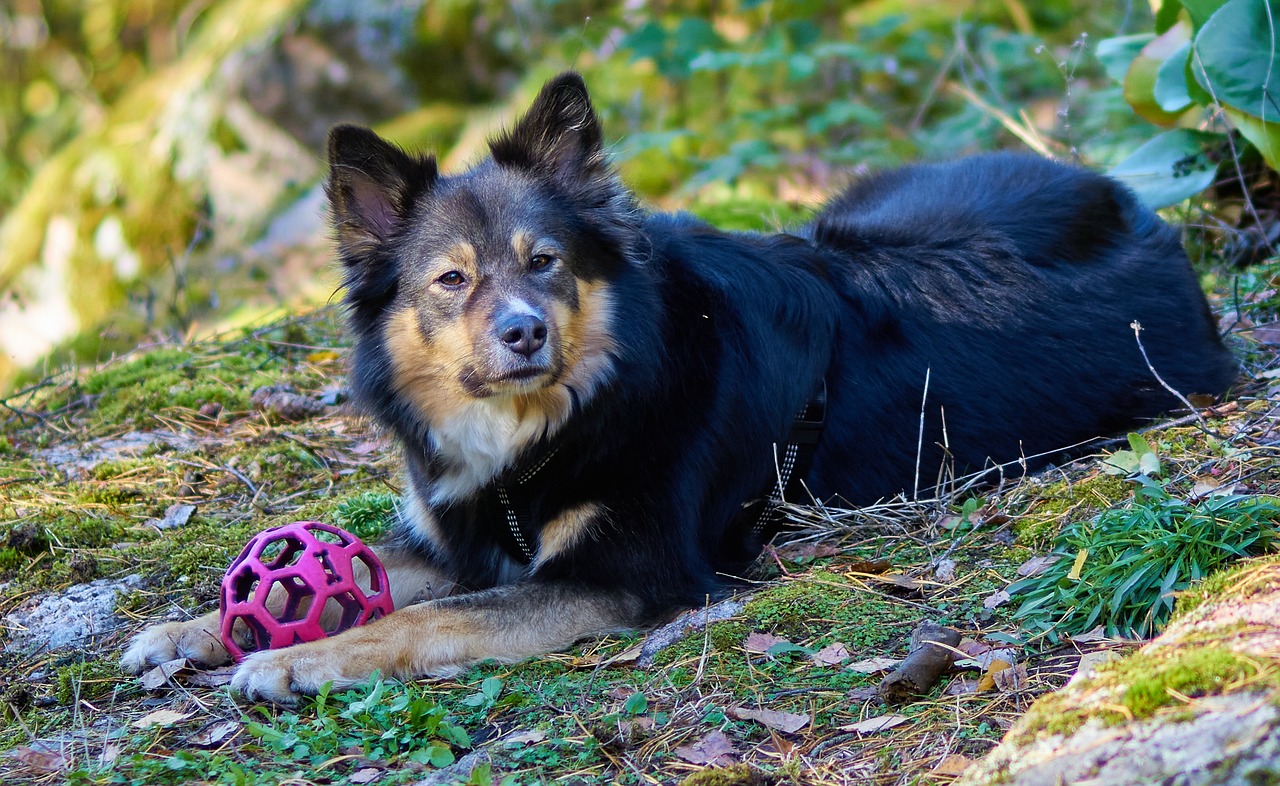
Temperament of the Lapphund
The Lapphund breed is renowned for its friendly and affectionate nature, making them a popular choice among families and dog enthusiasts alike. These dogs possess a unique blend of traits that not only endear them to their owners but also make them excellent companions. If you’re considering adding a Lapphund to your family, understanding their temperament is key to ensuring a harmonious relationship.
Lapphunds are social animals that thrive on interaction. They are known for their loyalty and protective instincts, often forming strong bonds with their human companions. This breed is generally good with children and tends to be playful, which makes them great for families. Their affectionate nature often leads them to seek out attention and companionship, so be prepared for a dog that loves to be involved in family activities.
When it comes to their interaction with other pets, Lapphunds are typically friendly. They are known to get along well with other dogs and even cats, especially if they are socialized from a young age. Early socialization is crucial, as it helps them develop a well-rounded personality. It’s not uncommon for Lapphunds to engage in playful antics with their furry friends, showcasing their joyful and energetic disposition.
However, it’s important to note that Lapphunds can also exhibit a protective nature. They are known to be territorial and might bark at strangers or unfamiliar animals. This instinct to protect their home and family can be a double-edged sword; while it makes them excellent watchdogs, it also means that early training and socialization are essential to curb any excessive barking or aggressive tendencies.
In summary, the temperament of the Lapphund is characterized by their affectionate demeanor, playfulness, and loyalty. They thrive on companionship and require regular interaction with their families. With the right training and socialization, these dogs can become the perfect addition to any home, offering love and loyalty in abundance.
- Are Lapphunds good with children? Yes, Lapphunds are generally very affectionate and playful with children, making them great family pets.
- Do Lapphunds require a lot of exercise? Absolutely! They are energetic dogs that need regular exercise to stay happy and healthy.
- How do Lapphunds behave around other pets? They are typically friendly with other pets, especially if they are socialized early.
- Are Lapphunds good watchdogs? Yes, their protective nature makes them excellent watchdogs, but they should be trained to manage excessive barking.
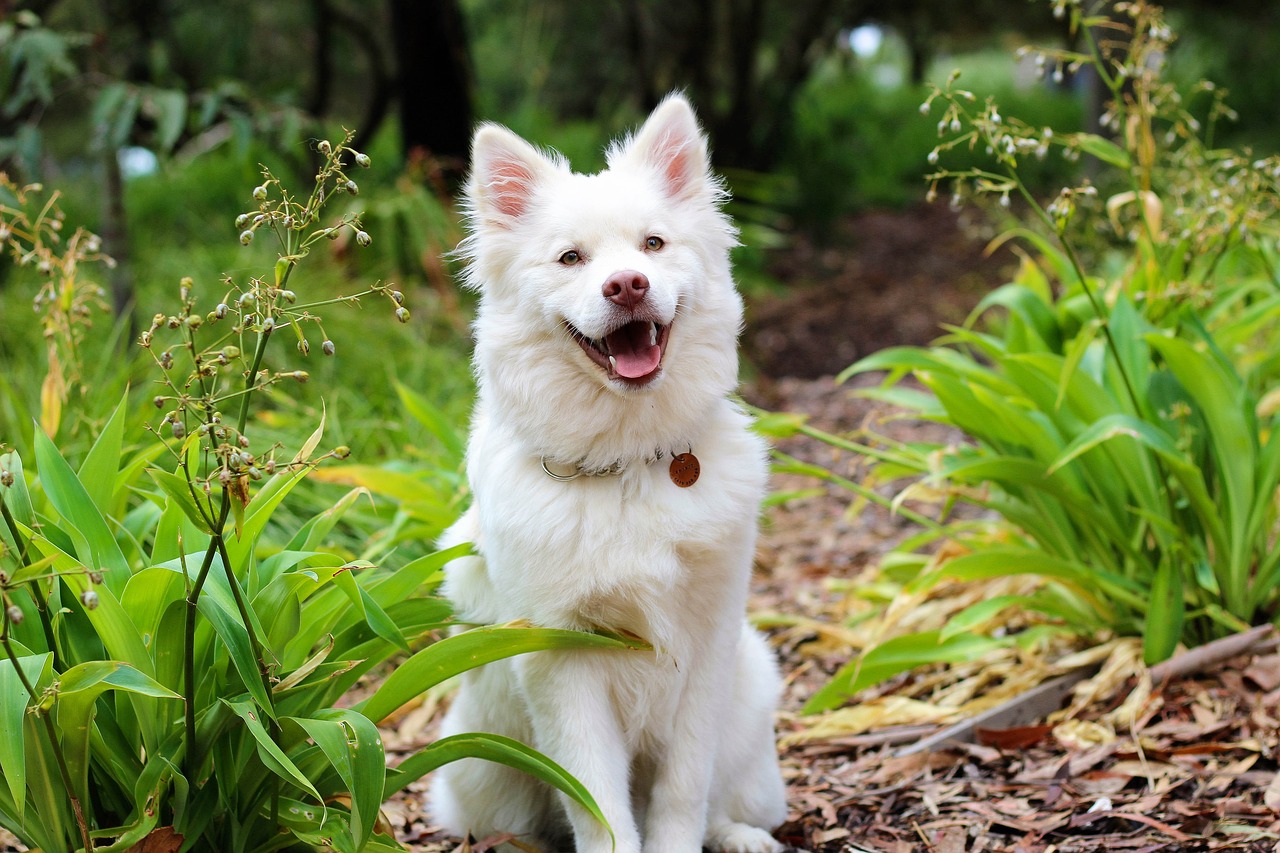
Physical Characteristics
The Lapphund breed is truly a sight to behold, with a combination of features that make them both striking and unique. These dogs are medium-sized, typically weighing between 35 to 65 pounds, depending on their sex and lineage. Their height generally ranges from 18 to 24 inches at the shoulder, giving them a sturdy yet agile build. This size makes them perfect companions for families, as they are neither too small to be fragile nor too large to be unwieldy.
One of the most remarkable aspects of the Lapphund's physical traits is their double coat. The outer coat is long and straight, while the undercoat is dense and soft, providing insulation against harsh weather. This coat acts like a natural barrier against cold temperatures, making Lapphunds well-suited for colder climates. Their fur can come in a variety of colors, including:
- Black
- Brown
- Gray
- White
- Combination of colors with markings
These color variations not only add to their aesthetic appeal but also signify their adaptability to different environments. The Lapphund's fur requires regular grooming to prevent matting and to keep it looking its best. This is especially important during shedding seasons, where a good brush can make all the difference in maintaining a healthy coat.
The variety in coat colors and patterns among Lapphunds is fascinating. Each dog can showcase a unique combination of colors, which can often lead to delightful surprises. The significance of their thick fur cannot be overstated; it not only protects them from the cold but also serves as a barrier against insects and minor abrasions. Owners should take note that Lapphunds can sometimes exhibit seasonal color changes, where their coat may lighten or darken depending on the time of year.
When it comes to grooming, Lapphunds require a bit of dedication. Regular brushing is essential, ideally at least once a week, but during shedding seasons, it might be necessary to brush them daily. Using the right tools, such as a slicker brush or an undercoat rake, can make this task easier and more effective. This grooming routine not only keeps their coat healthy but also provides an opportunity for bonding between the dog and its owner.
The Lapphund's build is robust and well-proportioned, which contributes to their agility and strength. Their strong legs allow them to navigate through various terrains, whether it's a snowy landscape or a rugged trail. This physical capability makes them excellent companions for outdoor activities, such as hiking or running. Understanding their size and build helps potential owners prepare for their exercise and space needs, ensuring that they can provide a suitable environment for these energetic dogs.
Like any breed, Lapphunds are prone to certain health issues. Common concerns include hip dysplasia and eye disorders, which can affect their quality of life. Regular check-ups with a veterinarian and a proper diet can help mitigate these risks, allowing your Lapphund to thrive. Being proactive about their health can make a world of difference in their lifespan and overall happiness.
Q: Are Lapphunds good with children?
A: Yes, Lapphunds are known for their friendly and playful nature, making them great companions for children.
Q: How much exercise do Lapphunds need?
A: Lapphunds require regular exercise, ideally at least an hour a day, to keep them happy and healthy.
Q: Do Lapphunds shed a lot?
A: Yes, Lapphunds have a thick double coat that sheds, especially during seasonal changes. Regular grooming helps manage this.
Q: Can Lapphunds adapt to apartment living?
A: While they can adapt, it’s essential to provide them with enough exercise and mental stimulation to keep them content.
Coat and Color Variations
The Lapphund breed is not only known for its friendly demeanor and loyal nature but also for its stunning coat and vibrant color variations. Their thick, double-layered fur serves as a protective barrier against harsh weather, making them well-suited for colder climates. This insulating layer is essential for their survival in the frigid temperatures of their native regions. But let’s dive deeper into the fascinating world of Lapphund coat colors and patterns!
Lapphunds come in a range of colors that can vary significantly. The most common colors include:
- Black
- Brown
- Gray
- Wheaten
- White
Each color can also present itself in various shades and combinations, often featuring markings that can make every Lapphund unique. For example, a black Lapphund may have tan markings on its face, chest, and legs, adding to its striking appearance. These color variations are not just for aesthetics; they also play a role in how well the dog adapts to its environment. The darker coats tend to absorb more heat, which can be beneficial in colder climates, while lighter coats may reflect sunlight, helping the dog stay cool in warmer areas.
Moreover, the thickness of their fur is a crucial aspect of their physical traits. The outer layer is coarse and water-resistant, while the undercoat is soft and dense, providing warmth. This dual-layered coat not only protects them from the elements but also requires regular grooming to prevent matting and to keep it healthy. Regular brushing helps to remove loose fur and dirt, ensuring that their coat remains in top condition.
In summary, the coat and color variations of the Lapphund breed are not only visually appealing but also serve practical purposes. Understanding these traits can help potential owners appreciate the breed's unique characteristics and ensure they are well-prepared to care for their furry companions.
- What is the best way to groom a Lapphund? Regular brushing with a slicker brush and a comb is recommended to keep their coat healthy.
- Are Lapphunds hypoallergenic? No, Lapphunds are not hypoallergenic and may shed fur, which can trigger allergies in sensitive individuals.
- How often should Lapphunds be bathed? They should be bathed every few months or as needed, but over-bathing can strip their coat of natural oils.
Grooming Needs
This article explores the unique characteristics of the Lapphund breed, including their temperament, physical traits, and suitability as pets, providing valuable insights for potential owners and enthusiasts alike.
Lapphunds are known for their friendly and affectionate nature. This section delves into their social behaviors, loyalty, and how they interact with families and other pets.
The Lapphund breed is distinguished by its striking appearance. Here, we discuss their size, coat type, and other notable physical traits that define this unique breed.
Lapphunds have a variety of coat colors and patterns. This subsection examines the common colors found in Lapphunds and the significance of their thick fur in different climates.
Proper grooming is essential for maintaining a Lapphund's coat. These dogs possess a thick double coat that needs regular attention to keep it healthy and free from mats. A good grooming routine not only enhances their appearance but also helps in managing shedding and preventing skin issues. Ideally, you should brush your Lapphund at least once a week, but during shedding seasons, which typically occur in spring and fall, you might need to increase this to two to three times a week.
When it comes to grooming tools, a slicker brush is highly recommended for removing loose fur and preventing tangles. Additionally, a metal comb can help you reach the undercoat and ensure that no mats are left behind. Remember that grooming isn't just about aesthetics; it’s also a bonding experience between you and your furry friend.
Here are some key grooming tips to keep in mind:
- Bathing: Only bathe your Lapphund when necessary, as over-bathing can strip their coat of natural oils. Aim for a bath every 3 to 4 months, unless they get particularly dirty.
- Ear Care: Check their ears regularly for dirt and wax buildup. Clean them gently with a vet-recommended solution.
- Nail Trimming: Keep their nails trimmed to prevent discomfort. This can be done every 3 to 4 weeks.
In addition to these grooming practices, regular check-ups with a veterinarian can help identify any potential skin issues early on. By maintaining a consistent grooming schedule, you’ll not only keep your Lapphund looking their best but also contribute to their overall health and happiness.
Understanding the size and build of Lapphunds helps potential owners prepare for their needs. This part outlines average height and weight, as well as their overall physique.
Like all breeds, Lapphunds have specific health issues to be aware of. This section discusses common health concerns and preventive measures for ensuring their well-being.
Training a Lapphund requires patience and consistency. Here, we explore effective training techniques and the importance of early socialization for a well-adjusted dog.
Obedience training is crucial for Lapphunds. This subsection provides insights on methods to instill good behavior and commands effectively.
Socialization with other animals is vital for Lapphunds. This part discusses strategies for introducing them to different pets and environments to foster positive interactions.
Lapphunds thrive in specific living conditions. This section outlines ideal environments for them, including space requirements and suitable climates for their comfort.
Understanding the differences between urban and rural living for Lapphunds is essential. This subsection evaluates the benefits and challenges of each setting for the breed.
Regular exercise is crucial for a Lapphund's health. This part discusses the types of activities and daily routines necessary to keep them physically fit and mentally stimulated.
In conclusion, understanding the traits of the Lapphund is vital for potential owners. This final section summarizes key points and encourages responsible ownership for a fulfilling relationship with this breed.
1. How often should I groom my Lapphund?
It’s recommended to brush them at least once a week, but during shedding seasons, you may need to do it more frequently.
2. What tools do I need for grooming?
A slicker brush, metal comb, and dog-friendly shampoo are essential tools for grooming your Lapphund effectively.
3. Do Lapphunds require special dietary considerations?
Like all breeds, Lapphunds benefit from a balanced diet tailored to their age, weight, and activity level. Consult your vet for specific recommendations.
4. Are Lapphunds good with children?
Yes, Lapphunds are known for their friendly and affectionate nature, making them great companions for children when properly socialized.
Size and Build
The Lapphund is a breed that stands out not just for its stunning appearance but also for its well-proportioned size and build. Generally, these dogs are considered medium-sized, making them versatile companions for various living situations. On average, male Lapphunds weigh between 50 to 65 pounds, while females typically range from 35 to 50 pounds. They stand about 18 to 22 inches tall at the shoulder, giving them a sturdy yet agile physique. This size makes them suitable for both active families and individuals looking for a loyal pet.
One of the most striking features of the Lapphund is their robust build. They possess a strong, muscular body, which is essential for their historical role as herding dogs in the harsh climates of Scandinavia. Their powerful legs allow them to navigate various terrains, whether it's snow-covered fields or rocky hills. The breed's solid frame is complemented by a broad, wedge-shaped head and erect ears, which not only enhance their charming appearance but also contribute to their excellent hearing capabilities.
To give you a clearer picture of the Lapphund's size and build, here's a simple table that outlines their average measurements:
| Gender | Weight (lbs) | Height (inches) |
|---|---|---|
| Male | 50 - 65 | 18 - 22 |
| Female | 35 - 50 | 18 - 20 |
Understanding the size and build of a Lapphund is crucial for potential owners. It helps in preparing for the dog's needs, including space requirements and exercise routines. For instance, larger Lapphunds may need more room to roam and play, while smaller ones might adapt better to cozy living spaces. Regardless of their size, all Lapphunds require ample daily exercise to maintain their physical health and mental well-being.
In summary, the Lapphund's size and build are not just about aesthetics; they play a significant role in the dog's overall health and behavior. By choosing a Lapphund, you're not just adopting a pet; you're welcoming a loyal companion that thrives on activity and engagement. So, if you're considering adding a Lapphund to your family, be prepared for an energetic, loving friend who will fill your life with joy!
- What is the average lifespan of a Lapphund? Lapphunds typically live between 12 to 15 years, depending on their health and care.
- Are Lapphunds good with children? Yes, they are known for their friendly and gentle nature, making them excellent family pets.
- Do Lapphunds require a lot of exercise? Absolutely! They are active dogs that need regular physical activity to stay healthy and happy.
- How often should I groom my Lapphund? Regular grooming is essential, especially during shedding season. Aim for at least once a week, with more frequent brushing during heavy shedding periods.
Health Considerations
When it comes to the health of Lapphunds, being informed is the first step towards ensuring your furry friend lives a long, happy life. Like many breeds, Lapphunds are predisposed to certain health issues that potential owners should be aware of. These can range from genetic conditions to common ailments that can affect their overall well-being. By understanding these issues, you can take proactive measures to keep your Lapphund healthy.
One of the most notable health concerns in Lapphunds is hip dysplasia. This condition occurs when the hip joint doesn't fit snugly into the hip socket, leading to arthritis and pain. Regular veterinary check-ups and maintaining a healthy weight can help mitigate the risks associated with this condition. Additionally, eye problems such as cataracts and progressive retinal atrophy (PRA) are also common in this breed. Regular eye examinations can catch these issues early, allowing for timely intervention.
Another area to consider is their skin health. Lapphunds have a thick double coat that requires proper care. Without regular grooming, they can develop skin irritations or infections. It's essential to keep an eye out for any unusual signs, such as excessive scratching or patches of fur loss. A well-maintained coat not only keeps them looking good but also helps prevent health issues.
Here’s a quick overview of common health concerns for Lapphunds:
- Hip Dysplasia
- Eye Problems (Cataracts, PRA)
- Skin Allergies and Infections
- Obesity
Preventive measures play a significant role in maintaining the health of your Lapphund. Regular exercise is crucial, as it helps prevent obesity, which can lead to a host of other health issues. A balanced diet tailored to their specific needs is equally important. Consulting with a veterinarian about the best food options can ensure your Lapphund gets the nutrients they require.
Lastly, vaccinations and routine vet check-ups are vital. These visits can help catch potential health issues before they become serious problems. By being proactive and attentive to your Lapphund's health, you can enjoy many joyful years together.
Q: What is the average lifespan of a Lapphund?
A: Lapphunds typically live between 12 to 15 years, depending on their health and care.
Q: Are Lapphunds prone to any specific diseases?
A: Yes, they can be prone to hip dysplasia, eye problems, and skin allergies.
Q: How often should I take my Lapphund to the vet?
A: Regular check-ups are recommended at least once a year, with more frequent visits for older dogs or those with existing health concerns.
Q: What are the signs of health issues in Lapphunds?
A: Look for changes in behavior, excessive scratching, weight gain, or difficulty in movement as potential signs of health issues.
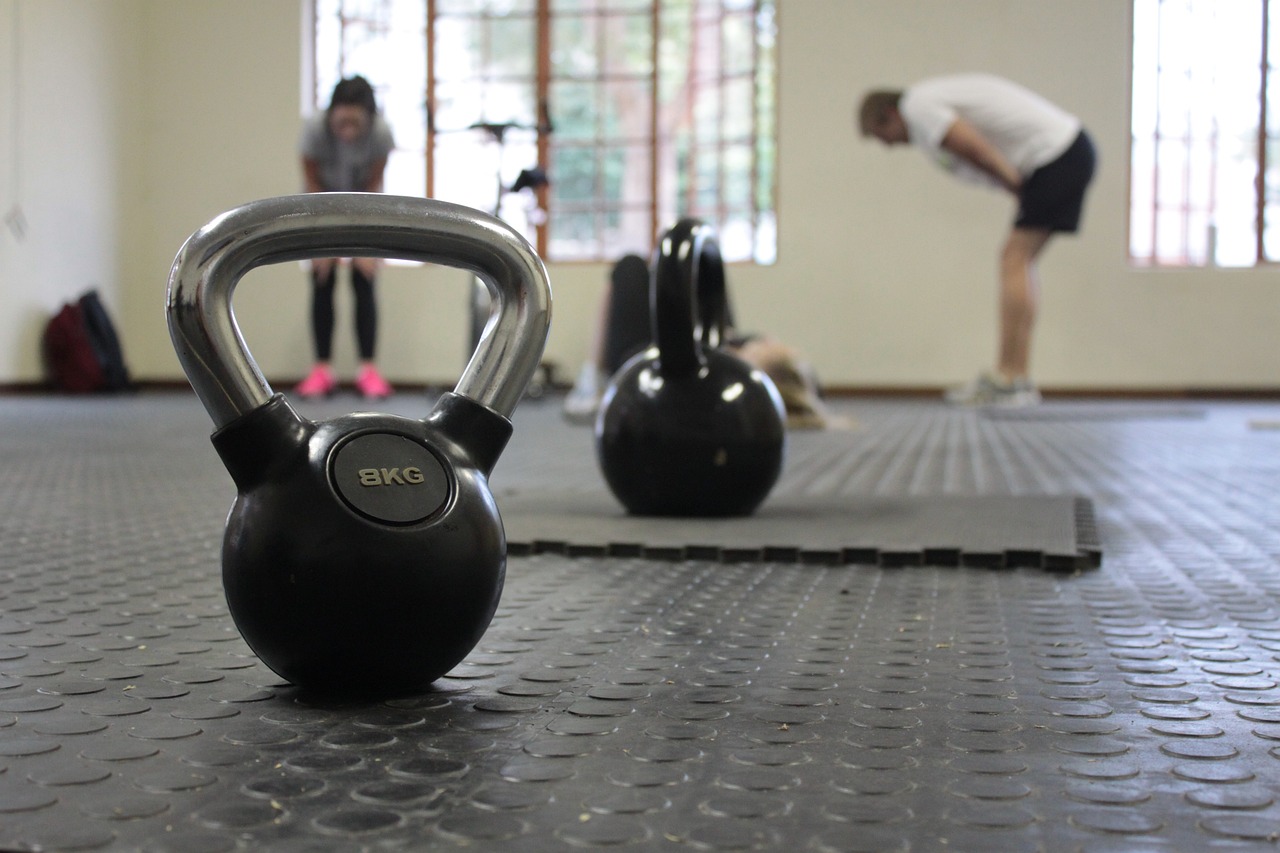
Training and Socialization
Training a Lapphund is not just about teaching them commands; it's a journey that strengthens the bond between you and your furry friend. These dogs are incredibly intelligent and eager to please, which makes them relatively easy to train, provided you approach it with the right mindset. Think of training as a dance; it requires rhythm, patience, and a bit of flair! Start with basic obedience commands such as "sit," "stay," and "come." Consistency is key here, so make sure to practice regularly and reward your Lapphund with treats or praise when they get it right. This positive reinforcement helps them associate good behavior with rewards, making them more likely to repeat those behaviors.
Socialization is equally important for Lapphunds. These dogs thrive on interaction, not just with humans but also with other animals. Early socialization helps them develop into well-rounded adults who are comfortable in various environments. Picture this: a Lapphund who has met a variety of people, pets, and experiences is like a seasoned traveler who knows how to navigate different cultures. To ensure your Lapphund is well-socialized, expose them to new sights, sounds, and smells regularly. This could mean taking them to the park, inviting friends over, or even visiting pet-friendly cafes. The more experiences they have, the more adaptable they will become.
Moreover, attending puppy classes can be a fantastic way to kickstart your Lapphund's socialization journey. These classes not only teach essential obedience skills but also provide a safe space for your pup to interact with other dogs. It's like a puppy playdate with a purpose! Look for classes that emphasize positive reinforcement techniques, as these will align best with your Lapphund's temperament.
Here’s a quick overview of some effective training techniques and socialization strategies:
| Training Technique | Description |
|---|---|
| Positive Reinforcement | Rewarding good behavior with treats or praise. |
| Clicker Training | Using a clicker to mark desired behaviors followed by a reward. |
| Leash Training | Teaching your Lapphund to walk calmly on a leash. |
Remember, patience is a virtue when it comes to training and socializing your Lapphund. They may not get it right every time, and that’s okay! Celebrate small victories, and don’t forget to have fun along the way. After all, training should feel less like a chore and more like an adventure you embark on together.
In addition to training, you should also consider how your Lapphund interacts with other pets. If you have other animals at home, introducing them slowly and carefully is crucial. Start with brief meetings and gradually increase the time they spend together. This helps prevent any territorial behaviors and fosters a sense of camaraderie. Just like humans, dogs have their own personalities, and some may take longer to warm up to new friends than others. So, be patient and let your Lapphund take the lead in forming those new friendships.
- How early should I start training my Lapphund? It's best to start training as early as possible, ideally when they are puppies, to instill good habits.
- Can Lapphunds be trained to get along with cats? Yes, with proper socialization and gradual introductions, many Lapphunds can learn to coexist peacefully with cats.
- How much exercise do Lapphunds need? Lapphunds require regular exercise, ideally 1-2 hours per day, to keep them physically and mentally stimulated.
Obedience Training
When it comes to training your Lapphund, obedience training is not just a suggestion; it's a necessity. These dogs are intelligent and eager to please, but their independent streak can sometimes lead to stubbornness. Think of it as teaching a child to ride a bike; without proper guidance and practice, they might end up wobbling all over the place! So, how do you ensure that your Lapphund becomes a well-mannered companion? Here are some effective strategies to consider.
First and foremost, consistency is key. Just like you wouldn't change the rules of a game halfway through, your Lapphund needs to understand what is expected of them at all times. Use the same commands for specific actions and ensure that all family members are on the same page. This avoids confusion and helps your furry friend learn faster. For example, if you use “sit” to ask them to sit down, everyone in the household should use that term consistently.
Another essential aspect of obedience training is the use of positive reinforcement. This means rewarding your Lapphund for good behavior rather than punishing them for mistakes. Think of it as giving a high-five to a friend who just scored a goal. You can use treats, praise, or even playtime as rewards. By associating commands with positive outcomes, your Lapphund will be more inclined to follow your instructions. Remember, training should be a fun experience for both of you!
Additionally, incorporating short training sessions into your daily routine can yield impressive results. Lapphunds thrive on mental stimulation, so keeping training sessions brief—around 5 to 10 minutes—will help maintain their focus. You can mix in commands like “stay,” “come,” and “leave it” during walks or playtime. This not only reinforces their training but also strengthens your bond.
Here’s a simple table summarizing some effective obedience commands to teach your Lapphund:
| Command | Purpose | Reward Example |
|---|---|---|
| Sit | To have them sit down | Treat or praise |
| Stay | To keep them in one place | Playtime or a favorite toy |
| Come | To have them return to you | Treat or extra affection |
| Leave it | To stop them from picking up something | Immediate treat |
Lastly, socialization is a crucial part of obedience training. Exposing your Lapphund to various environments, people, and other animals helps them learn how to behave appropriately in different situations. It’s like teaching them the rules of the road before they start driving. The more experiences they have, the better they will adapt to new challenges.
In summary, obedience training for your Lapphund is a rewarding journey that requires patience, consistency, and a lot of love. By using positive reinforcement, keeping sessions short, and ensuring proper socialization, you’ll be well on your way to having a well-behaved and happy companion. So, grab those treats, put on your training hat, and get ready for some fun!
- How long does it take to train a Lapphund? Training duration varies, but with consistent practice, you can see significant improvements in a few weeks.
- Can I train my Lapphund at home? Absolutely! Home training can be effective, especially when you create a structured environment.
- What if my Lapphund is stubborn? Patience is crucial. Try different training techniques and maintain a positive attitude.
Socializing with Other Pets
When it comes to socializing Lapphunds with other pets, it's a journey that requires patience, understanding, and a sprinkle of fun! Lapphunds are naturally friendly and sociable dogs, but just like any breed, they need proper guidance to ensure harmonious interactions with other animals. Think of it like introducing a new friend to your circle; you want to make sure everyone gets along and feels comfortable!
Start by introducing your Lapphund to other pets in a controlled environment. This can be done in your home or a familiar outdoor space. The key is to keep the atmosphere calm and stress-free. Use positive reinforcement techniques, rewarding your Lapphund with treats and praise for good behavior. This not only builds their confidence but also helps them associate other pets with positive experiences.
It's essential to pay attention to body language during these interactions. Look for signs of discomfort or aggression, such as raised hackles, growling, or a stiff posture. If you notice any of these signals, take a step back and allow your Lapphund to relax before trying again. Remember, socialization is a gradual process, and rushing it can lead to negative experiences.
Here are some effective strategies to facilitate smooth introductions:
- Start Small: Begin with one pet at a time to avoid overwhelming your Lapphund.
- Positive Reinforcement: Use treats and praise to reward your Lapphund for calm behavior.
- Controlled Meetings: Keep the initial meetings short and supervised to maintain control.
- Outdoor Adventures: Take your Lapphund to dog parks or pet-friendly areas where they can socialize with various animals.
As your Lapphund becomes more comfortable, gradually increase the number of pets they interact with. This can include dogs, cats, and even smaller animals like rabbits. Just remember, every pet is different, and some may take longer to adjust than others. The goal is to create a well-rounded, social dog who can confidently mingle with different animals.
In conclusion, socializing your Lapphund with other pets is not just about exposure; it's about creating positive associations and ensuring each interaction is a pleasant experience. With time, patience, and a little effort, your Lapphund will thrive in a multi-pet household, making for a lively and loving environment!
Q: How early should I start socializing my Lapphund?
A: It's best to start socializing your Lapphund as early as possible, ideally during their puppy stage. Early exposure to various pets and environments can help them grow into well-adjusted adults.
Q: What if my Lapphund shows aggression towards other pets?
A: If your Lapphund displays aggressive behavior, it's crucial to seek professional help from a dog trainer or behaviorist. They can provide tailored strategies to address and correct these behaviors.
Q: Can I socialize my adult Lapphund?
A: Absolutely! While it may take more time and patience, adult Lapphunds can still learn to socialize with other pets. Consistent, positive experiences are key.
Q: Are there specific breeds that Lapphunds get along with better?
A: Lapphunds generally have a friendly disposition and can get along with various breeds. However, individual personalities play a significant role, so always monitor interactions closely.
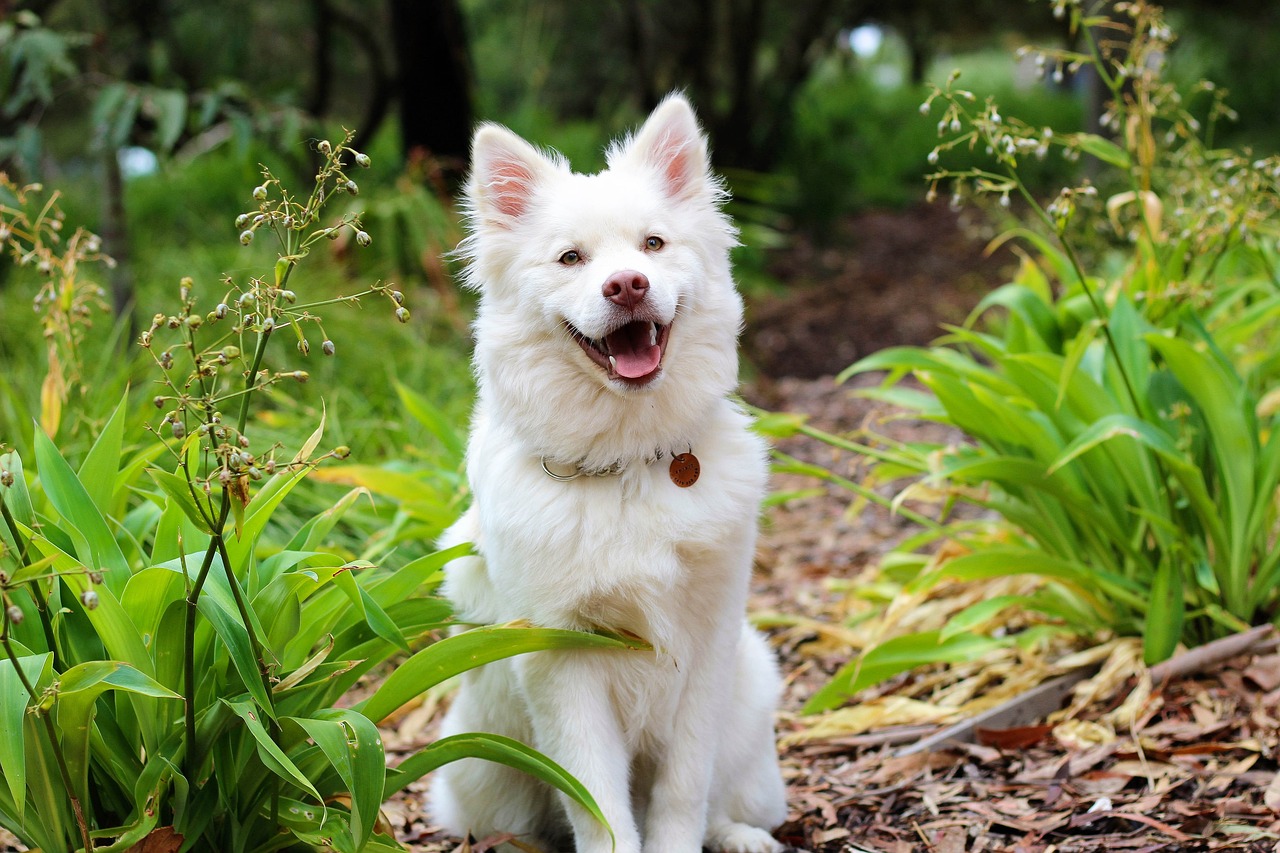
Best Living Environments
When it comes to finding the perfect living environment for your Lapphund, it's essential to consider their unique needs and personality traits. These dogs are known for their energetic and playful nature, which means they thrive in spaces that allow them to explore and engage in physical activities. Whether you live in a bustling city or a serene countryside, understanding the nuances of each environment can help you create a happy and fulfilling life for your furry friend.
First off, Lapphunds are quite adaptable, but they do best in homes where they have access to plenty of outdoor space. This breed loves to run, play, and interact with their surroundings, so a yard or nearby park is a huge plus. If you're considering urban living, think about how often you'll be able to take your Lapphund out for walks and playtime. Regular outings are crucial to keep them physically active and mentally stimulated.
On the flip side, rural living offers an abundance of space for your Lapphund to roam freely. Imagine your pup bounding through fields or playing in the snow—it's a dream come true for a dog that loves the outdoors. However, even in a rural setting, it's important to ensure that your dog is safely contained and won't wander off. Fencing is a wise investment to keep your Lapphund secure while allowing them the freedom to explore.
Here's a quick comparison of urban and rural living for Lapphunds:
| Aspect | Urban Living | Rural Living |
|---|---|---|
| Space | Limited; relies on parks | Abundant; room to roam |
| Socialization | Frequent interactions with people | Less crowded, but fewer interactions |
| Exercise Opportunities | Regular walks required | Natural play in open areas |
| Noise Levels | Higher; potential stress | Lower; peaceful environment |
In addition to space considerations, the climate is another factor that can significantly impact your Lapphund's comfort. This breed has a thick double coat that provides insulation against cold weather, making them quite resilient to lower temperatures. However, they are not as well-suited to extreme heat. If you live in a warmer climate, ensure that your Lapphund has access to shade and plenty of water to keep them cool. A well-ventilated home can also help them stay comfortable during hot summer days.
Ultimately, whether you choose urban or rural living, the key is to provide a stimulating and safe environment for your Lapphund. Regular exercise, socialization, and mental challenges are vital to their happiness. So, take the time to assess your lifestyle and choose a living situation that aligns with the needs of your furry friend. After all, a happy Lapphund equals a happy owner!
- Do Lapphunds do well in apartments? While they can adapt to apartment living, it's crucial to ensure they get ample exercise and outdoor time.
- How much exercise does a Lapphund need? Lapphunds require at least an hour of exercise daily, including walks, playtime, and mental stimulation.
- Are Lapphunds good with children? Yes, they are known for their friendly and affectionate nature, making them great companions for kids.
- What is the best climate for a Lapphund? They thrive in cooler climates due to their thick fur but can adapt with proper care in warmer areas.
Urban vs. Rural Living
When it comes to choosing the best living environment for your Lapphund, the debate between urban and rural settings is a significant one. Each environment offers its unique advantages and challenges that can greatly influence the happiness and well-being of your furry friend. In urban areas, Lapphunds can thrive in a bustling atmosphere filled with sights and sounds. However, it's crucial to ensure they receive adequate exercise and socialization. Living in a city often means smaller living spaces, which can be a challenge for a breed that enjoys having room to roam. Regular trips to parks or dog-friendly areas become essential to meet their exercise needs.
On the other hand, rural living provides ample space for a Lapphund to explore and engage in natural behaviors. The open fields and less crowded environments allow them to run free, which is something they absolutely love. However, rural living also comes with its own set of challenges, such as limited access to veterinary services and socialization opportunities with other dogs. It's vital to consider the lifestyle and routines that you can provide, as well as how much time you can dedicate to your Lapphund's needs.
Here’s a quick comparison of urban and rural living for Lapphunds:
| Aspect | Urban Living | Rural Living |
|---|---|---|
| Space | Limited space, often apartment living | Ample space for running and exploring |
| Exercise Opportunities | Requires trips to parks or dog runs | Natural access to fields and trails |
| Socialization | Frequent interactions with other dogs and people | Less frequent socialization unless arranged |
| Veterinary Access | Many clinics available | Fewer clinics, might require travel |
Ultimately, the decision between urban and rural living for your Lapphund should align with your lifestyle, your dog's needs, and your ability to meet those needs consistently. Whether you're navigating the busy streets of a city or enjoying the tranquility of the countryside, your Lapphund will flourish as long as they receive the love, attention, and exercise they deserve.
In conclusion, both urban and rural settings can work for a Lapphund, but understanding the specific requirements of the breed and your capability to fulfill them is paramount. So, where do you see yourself and your Lapphund living happily ever after?
- Can Lapphunds adapt to apartment living? Yes, but they require regular exercise and mental stimulation.
- How much exercise do Lapphunds need daily? They typically need at least 1 to 2 hours of exercise each day.
- Are Lapphunds good with children? Absolutely! They are known for their friendly and gentle nature with kids.
- Do Lapphunds shed a lot? Yes, they have a thick coat and shed seasonally, requiring regular grooming.
Exercise Needs
When it comes to the Lapphund, understanding their exercise needs is absolutely crucial. These dogs are not just cute faces; they are bundles of energy waiting to be unleashed! Think of them as furry athletes who thrive on physical activity. A bored Lapphund can quickly turn into a mischievous one, so keeping them engaged is key to a happy and healthy pup.
Lapphunds require a good mix of both mental and physical stimulation. Ideally, they should get at least 1 to 2 hours of exercise daily. This can include brisk walks, playtime in the yard, or even engaging in dog sports like agility training. The more varied the activities, the better! It’s like a buffet for their senses, keeping them excited and eager to participate.
Here are some activities that can help meet their exercise needs:
- Daily Walks: A couple of walks a day can be a great way to tire them out. Try to vary the route to keep things interesting!
- Fetch and Retrieve: Lapphunds love to chase! A game of fetch can be both fun and a great workout.
- Agility Training: Setting up an agility course in your backyard can provide excellent mental stimulation while keeping them physically active.
- Social Playdates: Organizing playdates with other dogs can help them burn off energy while socializing.
Moreover, Lapphunds are known for their intelligence, so incorporating training sessions into their exercise routine can be a win-win. Teaching them new tricks or commands not only tires them out but also strengthens your bond. Imagine them learning to jump through hoops or weave between cones—it's like they’re in their own little doggy Olympics!
In addition to regular exercise, it’s important to consider the environment in which they are exercised. If you live in an urban area, finding parks or open spaces to let them run free can be beneficial. On the other hand, if you’re in a rural setting, the open fields can provide a fantastic playground for them. Just remember, no matter where you are, always keep them leashed in areas with heavy traffic or other potential dangers.
Ultimately, the goal is to ensure that your Lapphund is not only physically fit but also mentally satisfied. A well-exercised Lapphund is a happy Lapphund, and a happy Lapphund means a happy owner! So, lace up those sneakers, grab a leash, and get ready for some quality time with your furry friend. After all, life is too short not to enjoy every moment with your Lapphund!
Q1: How much exercise does a Lapphund need daily?
A1: Lapphunds typically require at least 1 to 2 hours of exercise each day to keep them healthy and happy.
Q2: Can Lapphunds live in apartments?
A2: While Lapphunds can adapt to apartment living, they need ample exercise and mental stimulation. Regular outdoor activities are essential.
Q3: What are some good exercises for Lapphunds?
A3: Good exercises include daily walks, fetch games, agility training, and social playdates with other dogs.
Q4: How can I keep my Lapphund mentally stimulated?
A4: Incorporating training sessions, puzzle toys, and interactive games into their routine can help keep their minds sharp.
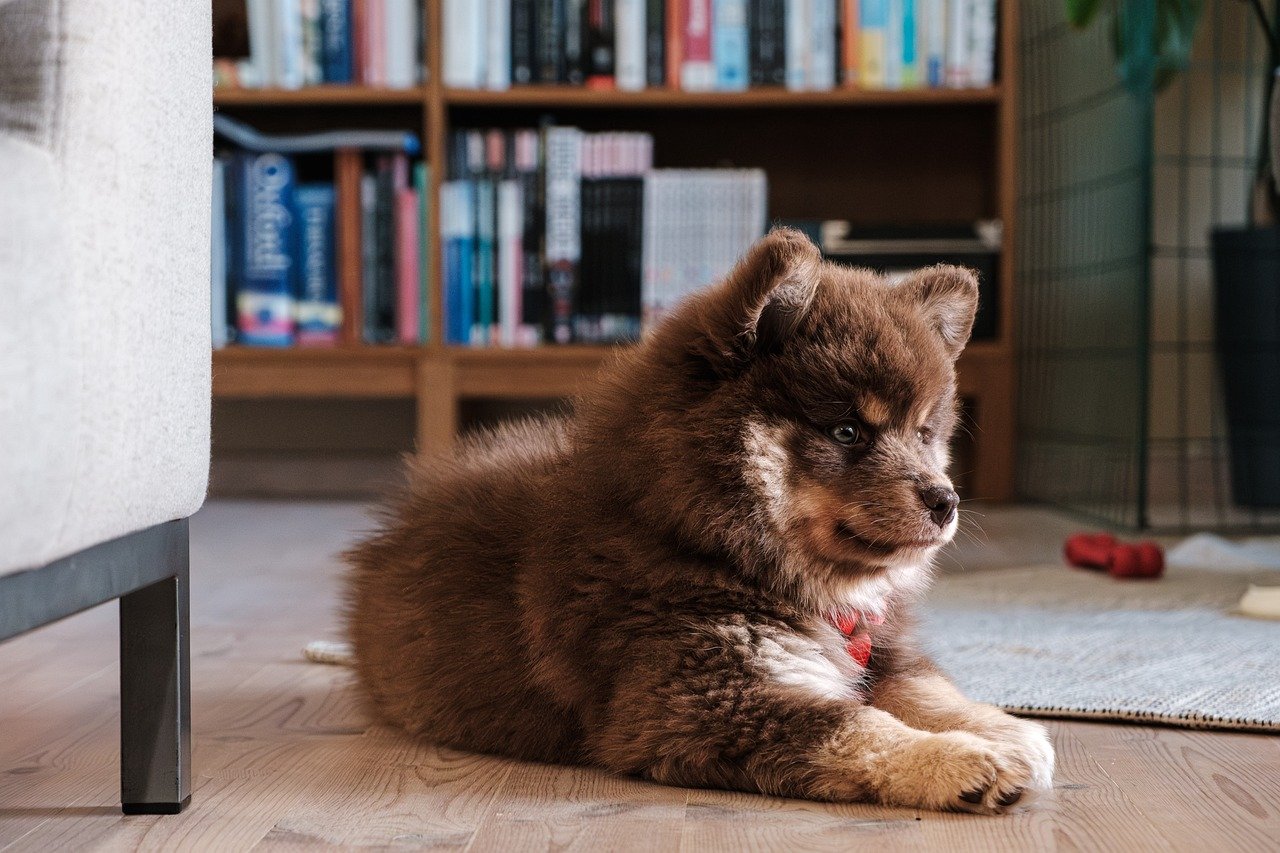
Conclusion
In conclusion, understanding the traits of the Lapphund is vital for potential owners who are looking to welcome this remarkable breed into their homes. These dogs are not just pets; they are companions that bring joy, loyalty, and a unique spirit into our lives. Their friendly and affectionate temperament makes them great family dogs, while their striking physical characteristics and robust health add to their charm. However, owning a Lapphund comes with responsibilities, including proper training, socialization, and grooming.
As you consider bringing a Lapphund into your family, remember that they thrive in environments where they can express their natural behaviors. Whether you live in an urban or rural setting, understanding their exercise needs and social requirements is crucial for their well-being. By providing a loving and structured environment, you can ensure a fulfilling relationship with your Lapphund.
Ultimately, the journey of owning a Lapphund can be incredibly rewarding. They have a way of enriching our lives, making every moment spent with them worthwhile. So, if you’re ready to embrace the joy of having a Lapphund, prepare yourself for a loyal friend that will stand by your side through thick and thin. Remember, responsible ownership is key to a happy and healthy life for both you and your furry companion.
- What is the average lifespan of a Lapphund? Lapphunds typically live between 12 to 15 years, depending on their health and care.
- Do Lapphunds require a lot of exercise? Yes, they are an active breed that requires regular exercise to stay healthy and happy.
- Are Lapphunds good with children? Absolutely! They are known for their gentle and friendly nature, making them great companions for kids.
- How often should I groom my Lapphund? Regular grooming is essential, ideally every few weeks, to manage their thick coat and minimize shedding.
- Can Lapphunds adapt to apartment living? While they prefer space to roam, with sufficient exercise and stimulation, they can adapt to apartment living.
Frequently Asked Questions
- What is the temperament of a Lapphund?
Lapphunds are known for their friendly and affectionate nature. They are social dogs that thrive on interaction with their families and can be very loyal companions. Their playful demeanor makes them great for families with children, as they tend to get along well with other pets too.
- How big do Lapphunds get?
Lapphunds typically weigh between 30 to 50 pounds and stand about 18 to 22 inches tall at the shoulder. Their sturdy build and strong physique make them well-suited for various activities, from agility training to just being a playful pet.
- What grooming needs do Lapphunds have?
Grooming a Lapphund is essential due to their thick double coat. Regular brushing, at least once a week, is recommended to keep their fur healthy and free of mats. During shedding seasons, more frequent grooming may be necessary to manage the loose hair.
- Are Lapphunds good for apartment living?
While Lapphunds can adapt to apartment living, they thrive in environments where they have space to roam and play. Regular exercise is crucial, so if you live in an apartment, be prepared to take them out frequently for walks and playtime.
- What are common health issues in Lapphunds?
Like many breeds, Lapphunds can be prone to certain health issues, such as hip dysplasia and eye problems. Regular vet check-ups and a healthy diet can help mitigate these risks and ensure your Lapphund stays healthy and happy.
- How do I train a Lapphund?
Training a Lapphund requires patience and consistency. Positive reinforcement methods work best, as these dogs respond well to rewards. Early socialization is also important to help them develop into well-adjusted adults.
- What kind of exercise do Lapphunds need?
Lapphunds are active dogs that require daily exercise to stay healthy and happy. Activities like walking, running, and playing fetch are great ways to keep them physically fit and mentally stimulated.
- Can Lapphunds live in cold climates?
Absolutely! Lapphunds are well-suited for cold climates due to their thick fur, which provides insulation against the cold. However, they should also have access to a warm shelter during extreme weather conditions.






